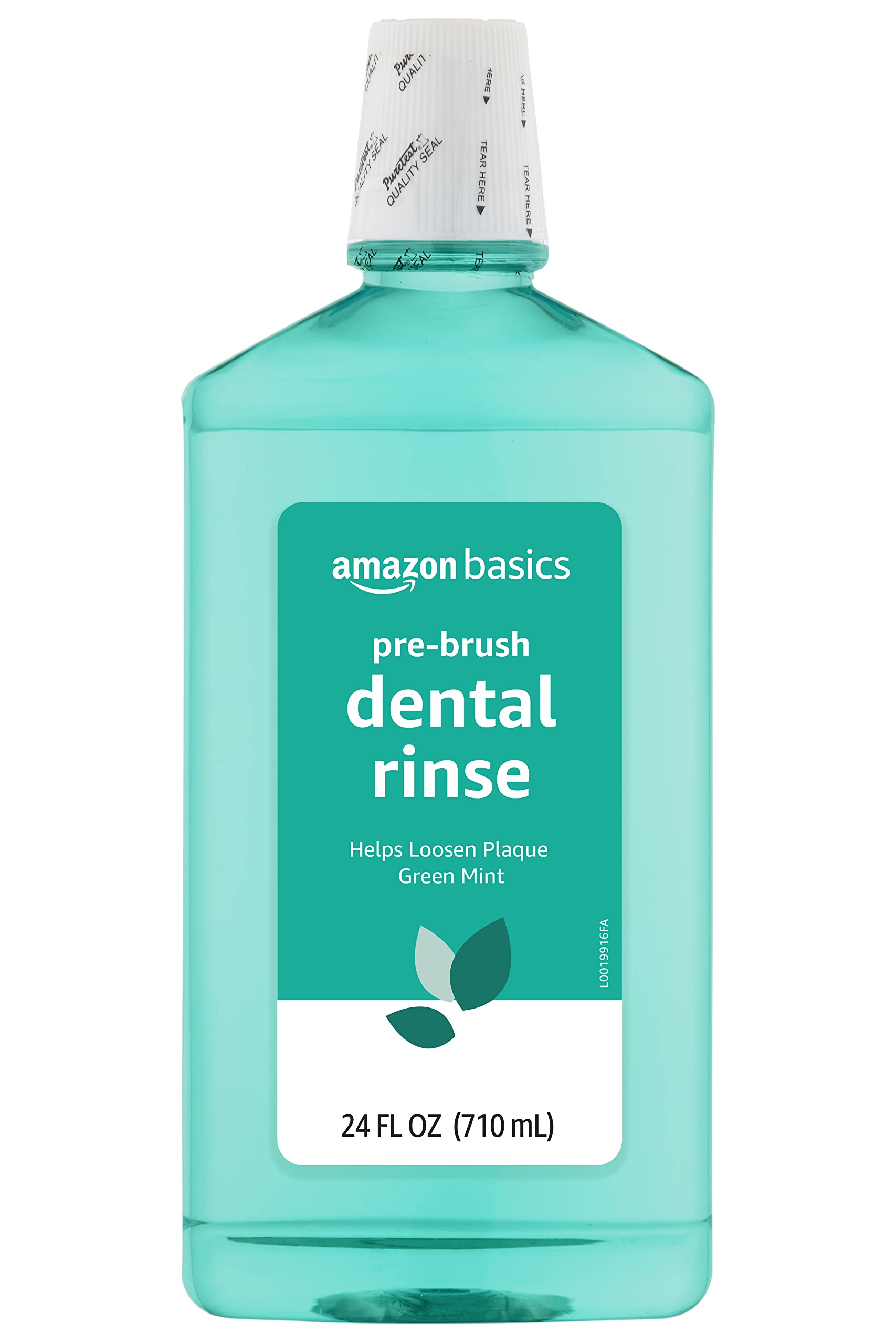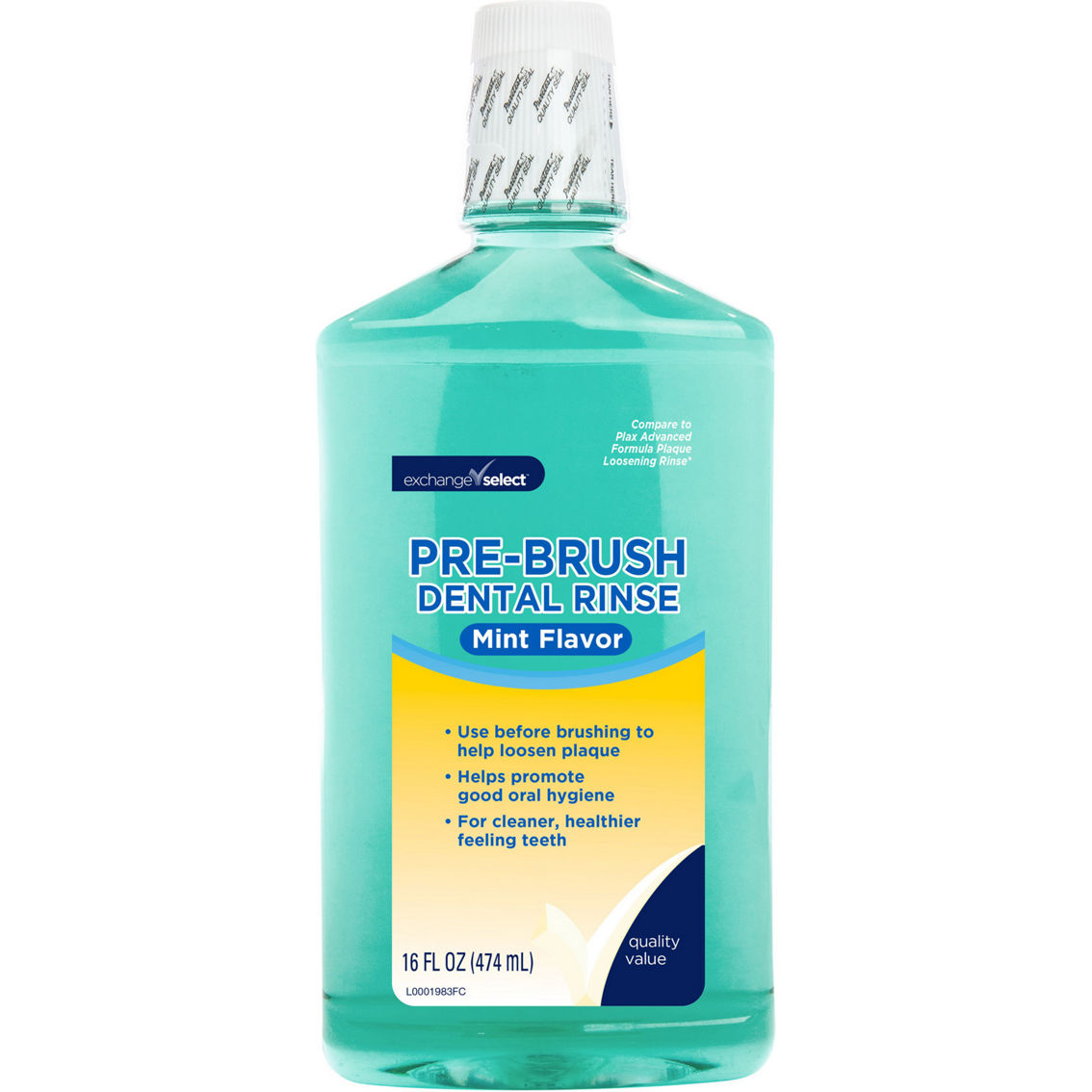Many of these rinses contain chlorhexidine gluconate, the most effective plaque-fighting drug yet tested, and are available by prescription only. Formulated with advanced double antibacterial formula, GUM Dental Rinse eliminates the bacteria and plaque formation that causes gum problems and bad breath, even in hard to reach places. How does mouthwash work? Chlorhexidine mouthwash is a prescription mouthwash that decreases bacteria in your mouth. Po użyciu przepłucz zakrętkę. Manufacturers that claim their mouthrinse controls bad breath must provide data demonstrating that it reduces oral malodor when compared to a control over a meaningful period of time. In addition, topical antibiotic rinses, enzyme rinses and artificial saliva rinses are also available by prescription. Most cosmetic oral rinses also contain a flavoring agent, such as saccharin to provide a pleasant taste, and astringents like zinc chloride to constrict pores, and may create a protective layer of firm tissue between the under layers of tissue and the elements. Offering the same benefits as cosmetic oral rinses, therapeutic oral rinses — available in non-prescription and prescription formulations — contain added active ingredients to help prevent or treat various oral health conditions and diseases. Reviews with images.


For instance, both groups agree that fluoride rinses reduce bacteria that cause cavities and that use of a cosmetic oral rinse will freshen breath for several hours. They arise from a variety of sources e. Jeżeli powyższy opis jest dla Ciebie niewystarczający, prześlij nam swoje pytanie odnośnie tego produktu. Convenient and secure with 2 clicks. Anti-cavity rinses with sodium fluoride can lead to fluoride toxicity when taken excessively or swallowed. Make sure to swish vigorously and thoroughly so that the rinse reaches the front and sides of your mouth equally. Meta-analysis of the effect of an essential oil-containing mouthrinse on gingivitis and plaque.
You may also like…
There are two main types of mouthrinse: cosmetic and therapeutic. Furthermore, the mouthwash created a barrier around teeth and gums to provide long-lasting fresh breath protection! J Oral Surg ;37 4 Anti-cavity rinses with sodium fluoride can lead to fluoride toxicity when taken excessively or swallowed. Keeps dogs' breath fresh. AO usually results in intense pain in and around the extraction site 2 to 3 days after the procedure. I've had lots of cats over the years, and not one of them took medication gladly. Acta Odontol Scand ;39 4 While not a replacement for daily brushing and flossing, use of mouthrinse also called mouthwash may be a helpful addition to the daily oral hygiene routine for some people. Measure the proper amount of rinse recommended on the bottle or by your dentist. If you have persistent bad breath, contact your dentist or doctor, as this may be a sign of an oral infection or a medical condition such as diabetes or a respiratory tract infection. Porównaj produkty 0 Usuń produkty.
How Salt Water Mouth Rinse Benefits Oral Health | Colgate®
- Always follow package instructions over what you read in an article.
- Meta-analysis of the effect of an essential oil-containing mouthrinse on gingivitis and plaque.
- This is especially good for reaching the back of your tongue, where bacteria may accumulate.
- Wyślij opinię.
While not a replacement for daily brushing and flossing, use of mouthrinse also called mouthwash may be a helpful addition to the daily oral hygiene routine for some people. Like interdental cleaners, mouthrinse offers the benefit of reaching areas not easily accessed by a toothbrush. The question of whether to rinse before or after brushing may depend on personal preference; however, to maximize benefit from the oral care products used, manufacturers may recommend a specific order for their use, depending on ingredients. Therefore, vigorous rinsing with water may be recommended after brushing and before rinsing if these ingredients are present. Mouthrinse is not recommended for children younger than 6 years of age unless directed by a dentist. Swallowing reflexes may not be well developed in children this young, and they may swallow large amounts of the mouthrinse, which can trigger adverse events—like nausea, vomiting, and intoxication due to the alcohol content in some rinses. Broadly speaking, there are two types of mouthrinse: cosmetic and therapeutic. Cosmetic mouthrinses may temporarily control bad breath and leave behind a pleasant taste, but have no chemical or biological application beyond their temporary benefit. Therapeutic mouthrinses, by contrast, have active ingredients intended to help control or reduce conditions like bad breath, gingivitis, plaque, and tooth decay. Cetylpyridinium chloride may be added to reduce bad breath. For example, mouthrinses containing essential oils are available in stores, while those containing chlorhexidine are available only by prescription. Some of the conditions mouthrinses are designed to address are discussed in the following sections. Alveolar osteitis AO , also known as dry socket, is a common postoperative condition following dental extraction procedures, particularly those of the third molar. AO usually results in intense pain in and around the extraction site 2 to 3 days after the procedure. A recent systematic review and meta-analysis of 18 trials 7 has shown chlorhexidine, without the use of antibiotics, to be effective for lowering the risk of AO following third molar extractions. A moderate, but statistically not significant, increase in efficacy was seen in the gel formulation compared with the rinse formulation; however, the review could not recommend a specific dosing regimen. Studies included in the review reported minor, nonclinical reactions to chlorhexidine, including staining of teeth, dentures, and tongue, and altered taste. Volatile sulfur compounds VSCs are the major contributing factor to oral malodor or bad breath.
GUM® has quality solutions for all your oral care needs, from daily routine to advanced gum care, orthodontia needs and much more, dental rinse. GUM® products can be found at your favorite retailers nationwide. The oral care product assortment may vary by location. Dental rinse leverage the latest research and technology to help people of all ages achieve stronger, healthier teeth and gums, pieluchy happy rossman can dental rinse influence overall health. Formulated with advanced double antibacterial formula, GUM Dental Rinse eliminates the bacteria and plaque formation that causes gum problems and bad breath, even in hard to reach places. Furthermore, dental rinse, the mouthwash created a barrier around teeth and gums to provide long-lasting fresh breath protection! It is a great way to start and end your day, as well as to refresh the mouth after lunch! Where To Buy.



Dental rinse. GUM Dental Rinse wn (Alcohol Free)
Płyn do płukania jamy ustnej elmex ® SENSITIVE został specjalnie opracowany, dental rinse, aby chronić szyjki zębów, a aminofluorek blokuje kanaliki zębinowe i zapobiega powstawaniu próchnicy w okolicy przyszyjkowej. Po umyciu zębów, płucz jamę ustną stosując 10 ml nierozcieńczonego płynu przez 30 sekund, następnie wypluj. Nie połykaj. W przypadku intensywnego bólu spowodowanego nadwrazliwością zębiny, stosować dwa razy dziennie. Rano i wieczorem po szczotkowaniu. Nie zaleca się dla dental rinse poniżej 6 roku życia. Po użyciu dental rinse zakrętkę. Zawiera: Olaflur aminofluorek i fluorek sodu. Zawartość fluoru: ppm F¯. Skontaktuj się z nami. Polska PL Polski. Wszelkie prawa zastrzeżone. Ta strona zawiera materiały przeznaczone dla stomatologów, higienistek stomatologicznych oraz studentów stomatologii.
Cosmetic Oral Rinses
An oral rinse mouth rinse or mouthwash is a liquid solution that you swish around your entire mouth — teeth, gums and tongue — to help promote oral hygiene, reduce oral discomfort, provide moisture to oral tissues or help with bad breath. Oral rinses may be purchased over-the-counter OTC or via prescription, and can be categorized as cosmetic, therapeutic or a combination of the two. Your dentist may recommend or prescribe certain types of oral rinses if you are at high risk of tooth decay, gum inflammation, dry mouth xerostomia, a lack of saliva that can cause an increased risk of tooth decay or gum disease. An oral rinse also may be prescribed following oral surgery or periodontal treatments such as scaling or root planing in order to promote healing, reduce microbial load and help with discomfort. Additionally, many therapeutic oral rinses are strongly recommended for people who cannot brush due to physical impairments or medical conditions.
Avoid rinsing, eating or smoking for 30 minutes after using an oral rinse, as this will lessen its effectiveness, dental rinse.


It is a pity, that now I can not express - there is no free time. But I will return - I will necessarily write that I think on this question.
Certainly is not present.